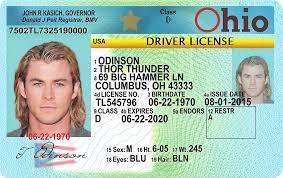To apply for a State of Ohio ID, you must provide specific documents to verify your identity, Social Security number, and Ohio residency. These requirements are put in place to ensure the accuracy and legitimacy of the identification process. Below are the essential documents needed State of Ohio ID:
-
Proof of Identity:
The primary document needed to establish your identity is a birth certificate. This is a vital record that provides details about a person's birth, including their full name, date of birth, place of birth, and parentage. It serves as the foundation for verifying your identity.
If you were born outside of the United States, an unexpired passport or other valid immigration documents can be used as an alternative to a birth certificate. These documents confirm your identity and legal status within the country.
-
Proof of Social Security Number:
You will need to present your Social Security card or an official document from the Social Security Administration that includes your full Social Security number. This serves as a crucial piece of information to link your identity to your Social Security record.
In the event that you are not eligible for a Social Security number, you will need to provide documentation from the Social Security Administration indicating your ineligibility.
-
Proof of Ohio Residency:
Establishing residency in Ohio is a key requirement for obtaining a State of Ohio ID. You can provide documents that demonstrate your current Ohio address. This may include:
-
Utility Bills: Recent bills for services like water, gas, electricity, or landline phone service with your name and Ohio address.
-
Rental or Lease Agreement: A signed and dated rental or lease agreement that includes your name and Ohio address.
-
Bank Statements: Recent statements from an Ohio-based financial institution showing your name and address.
-
Government Correspondence: Official letters or documents issued by a government agency (e.g., tax documents, benefits statements) that show your Ohio address.
-
School Records: If you are a student, a recent transcript or report card from an Ohio educational institution can be used as proof of residency.
It's important to note that all residency documents must be current and valid. They should also be original or certified copies; photocopies or scanned versions are not accepted.
For minors or individuals living with a parent or guardian, the parent or guardian's residency documents may be used, provided they can show proof of legal guardianship.
-
It's essential to ensure that all documents presented are in good condition, legible, and not expired. If any documents are written in a language other than English, they may need to be accompanied by a certified translation.
Keep in mind that the Ohio Bureau of Motor Vehicles (BMV) may also require additional documentation in specific cases, such as name changes or legal guardianships. Therefore, it's recommended to check the BMV website or contact them directly for any special circumstances.
In conclusion,
The process of obtaining a State of Ohio ID requires providing proof of identity, Social Security number, and Ohio residency. By presenting the appropriate, valid documents, you can ensure a smooth application process and receive your State of Ohio ID in a timely manner.
- For more information visit IDPAPA


